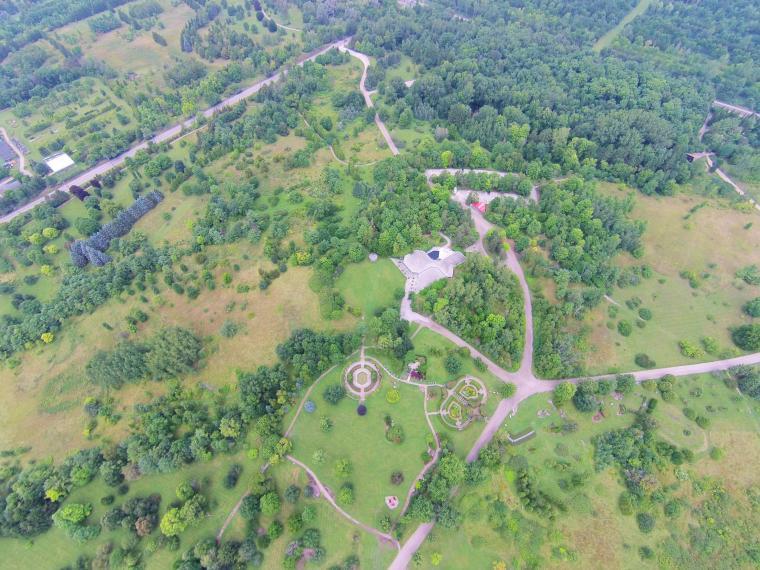The Arboretum is a place of beauty, peace and learning

A turtle swam just below the water’s surface as we stood at the pond’s edge with our daughter. A shimmering log floating in the distance caught my eye, but I didn’t think much of it. Then my wife said, “Sam, what is that?”
Squinting in the sun, we saw three or four rock-like silhouettes rise from the water and press against the log. Was it a weasel? We then figured it out: They were turtles trying to perch atop the log. Once up for a few seconds, the top-heavy log would roll backward into the water with all the turtles falling backward. The turtles would try clawing up again, only to fall off. What a sight.
The University of Guelph’s Arboretum is a place of beauty, peace and learning.
As a child, the Arboretum taught me about maple syrup production through its once existing evaporator, it showed me bees making honey in an indoor display, and it provided me with a “tree friend” to take pride in.
Later in life, it hosted our summer wedding reception.
I recently spoke with Professor Shelley Hunt, Arboretum director, about the Arboretum and how its existence can be secured in the years to come.
Sam: What is your favorite tree in the Arboretum?
Shelley: For a forest ecologist, that’s like asking a parent to pick their favorite child, but I would say it’s the blue ash.
It’s a rare, native species in Ontario that’s at risk but has so far shown tolerance to the emerald ash borer. It may be important for ash tree restoration in the province. The blue ash also symbolizes the Arboretum’s mandate of preservation, as the Arboretum chose the blue ash years ago as a species to be preserved on site.
Sam: What is the tallest tree in the arboretum?
Shelley: I would guess it’s one of the white pines at the corner of College and Victoria, or one of the sugar maples.
Sam: What research is happening at the Arboretum, and why is it important?
Shelley: The Arboretum is a living laboratory to learn about invasive and at-risk species, pollinators and other plants, insects and mammals—all on campus. Our current Elm Recovery Project aims to find elm trees resistant to Dutch elm disease, and promising varieties have been found. Elm preservation is important because of their strong aesthetic connection to people who grew up with them on their streets. Elms can also live in water, which creates food and shelter for wildlife adapted to this niche. If elm trees go missing, its role in the forest ecosystem goes missing, and we cannot assume that another species will replace its role.
Sam: Can you tell me about the Nature Reserve south of Stone Road?
Shelley: It’s 100 acres and includes provincially significant wetlands, orchard trees from a previous farmstead, and a woodlot with hemlocks over a century old, which is rare for Guelph. It’s used for student research and teaching. It’s also not open to the public and doesn’t have trails, so it provides a refuge for animals like owls and coyotes.
Sam: What is needed for the Arboretum’s existence to be secured in the years to come?
Shelley: The Arboretum receives much support from the University of Guelph. Donations are important, though, as our small but amazing staff rely on them. I encourage people to come for visits, do workshops, get involved and make a donation of they wish.
Sam: Has any wildlife gone missing over the years?
Shelley: The trend is actually in the positive direction: the Arboretum landscape has matured to support more life.
Sam: Do you think maple syrup production will ever come back?
Shelley: The program was popular and well-received by the public, but it relied on lots of staff time and the sugar maple forest is small. We’re now focusing on other activities. But never say never.
Sam Stevenson lives in Guelph with his wife and one- year-old daughter.